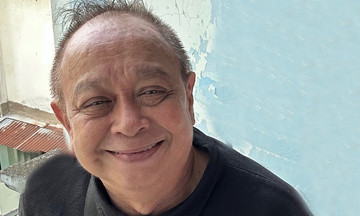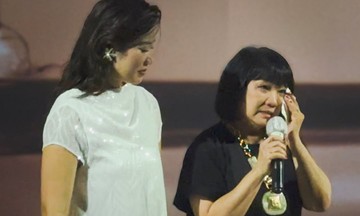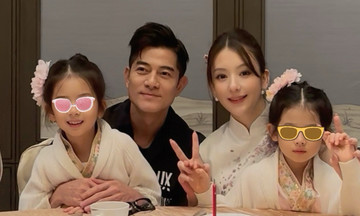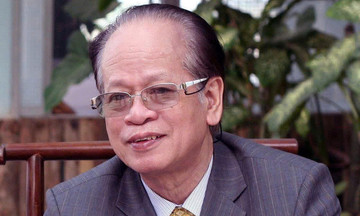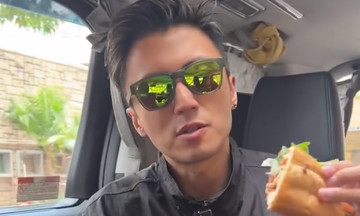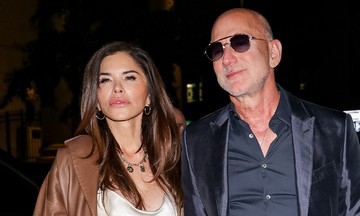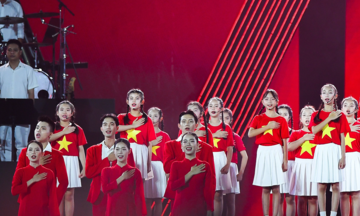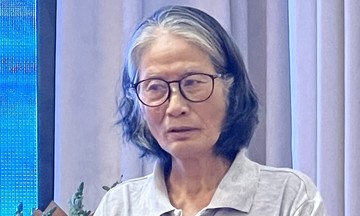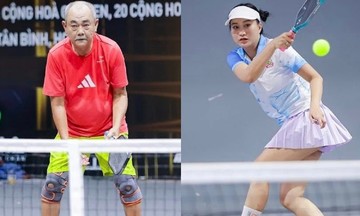Released on 22/8, the music video has now garnered over 6.7 million views. According to the YouTube Chart, the video ranked first globally among newly released music videos on its debut day. Directed by Nhu Dang, "Noi dau giua hoa binh" was filmed at the Truong Son National Cemetery in Quang Tri and the ancient village of Duong Lam (Hanoi).
In the music video, Hoa Minzy portrays a wife whose husband participated in the 81-day battle to defend the Quang Tri Citadel in 1972. The song, centered on the theme of revolution, praises the immense sacrifices of heroic Vietnamese wives and mothers whose husbands and children died in battle.
When embarking on the project a few months ago, stylist Khuc Manh Quan discussed the design, colors, and materials of the costumes with designer Quyen Nguyen to authentically recreate the image of Vietnamese farmers in the 1970s. "The outfits highlight the simplicity and frugality of life during wartime," Quan said.
Quyen Nguyen said she researched documents and consulted her parents, who lived through that period. She said, "My father was a soldier in that historic battle. Since I was a child, he told me many stories about it. My mother told me about the hardships of those times and what people usually wore."
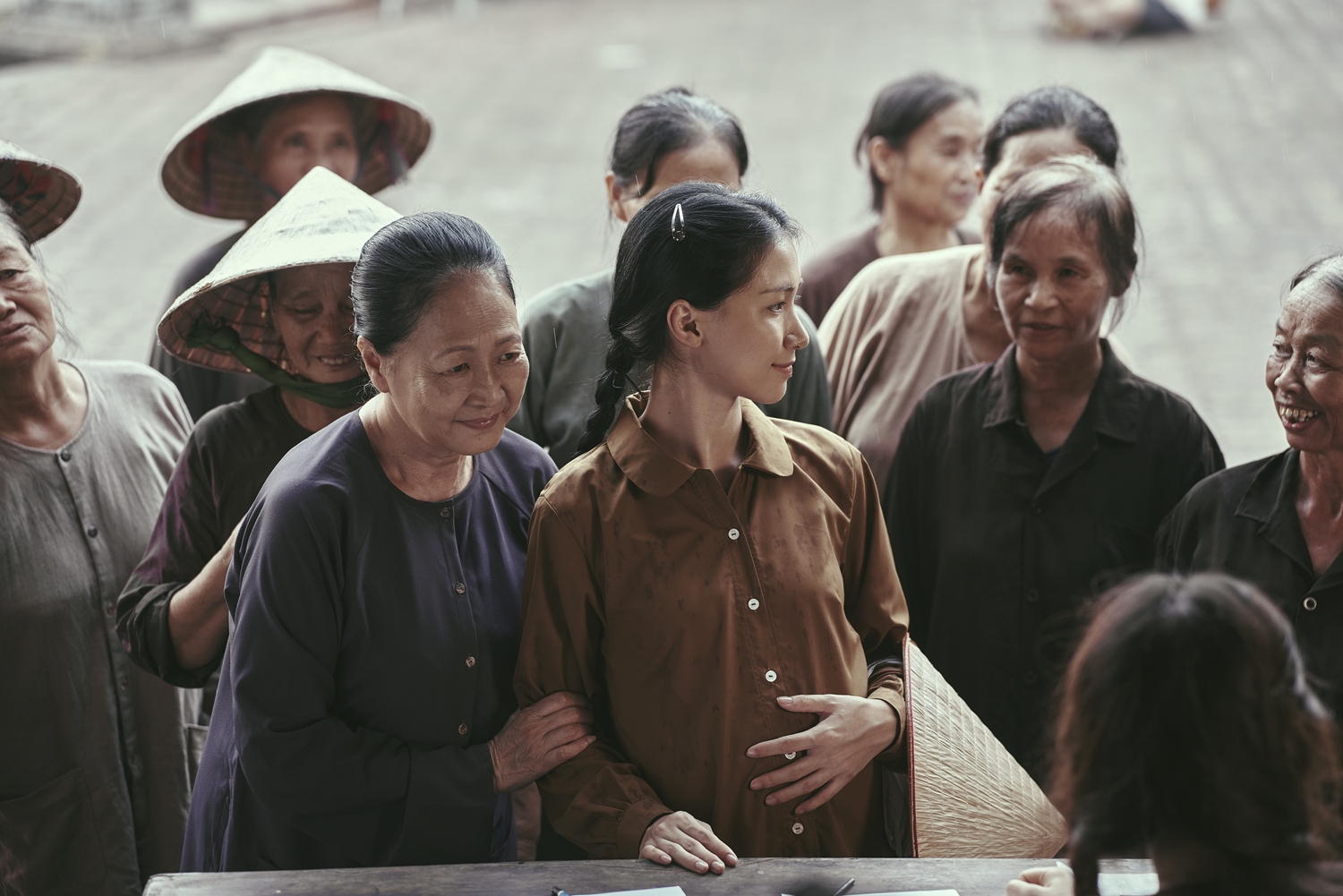 |
The somber-toned tunics in the MV depict the people of northern Vietnam in the old days. Photo: Provided by the interviewee |
The team avoided using brightly printed patterns or modern materials. Back then, small floral prints were considered a luxury, only found in wealthier families. Most farmers wore plain clothes in neutral colors due to the limited dyeing technology of the time. White was also rare, reserved for special occasions like weddings.
Therefore, they chose a familiar color palette: peace blue, brown, beige, and charcoal purple. Peace blue, symbolizing hope and the anticipation of independence, is the dominant color in the music video. The scene where Hoa Minzy's character wears a peace blue tunic to welcome her husband home on victory day is one of the most touching moments for many viewers.
Regarding the style, round-neck or lotus-neck tunics were favored, paired with black trousers. In southern Vietnam, this style is called "ao ba ba"; in the north, it's "ao canh." These simple, collarless tunics were closely associated with rural life.
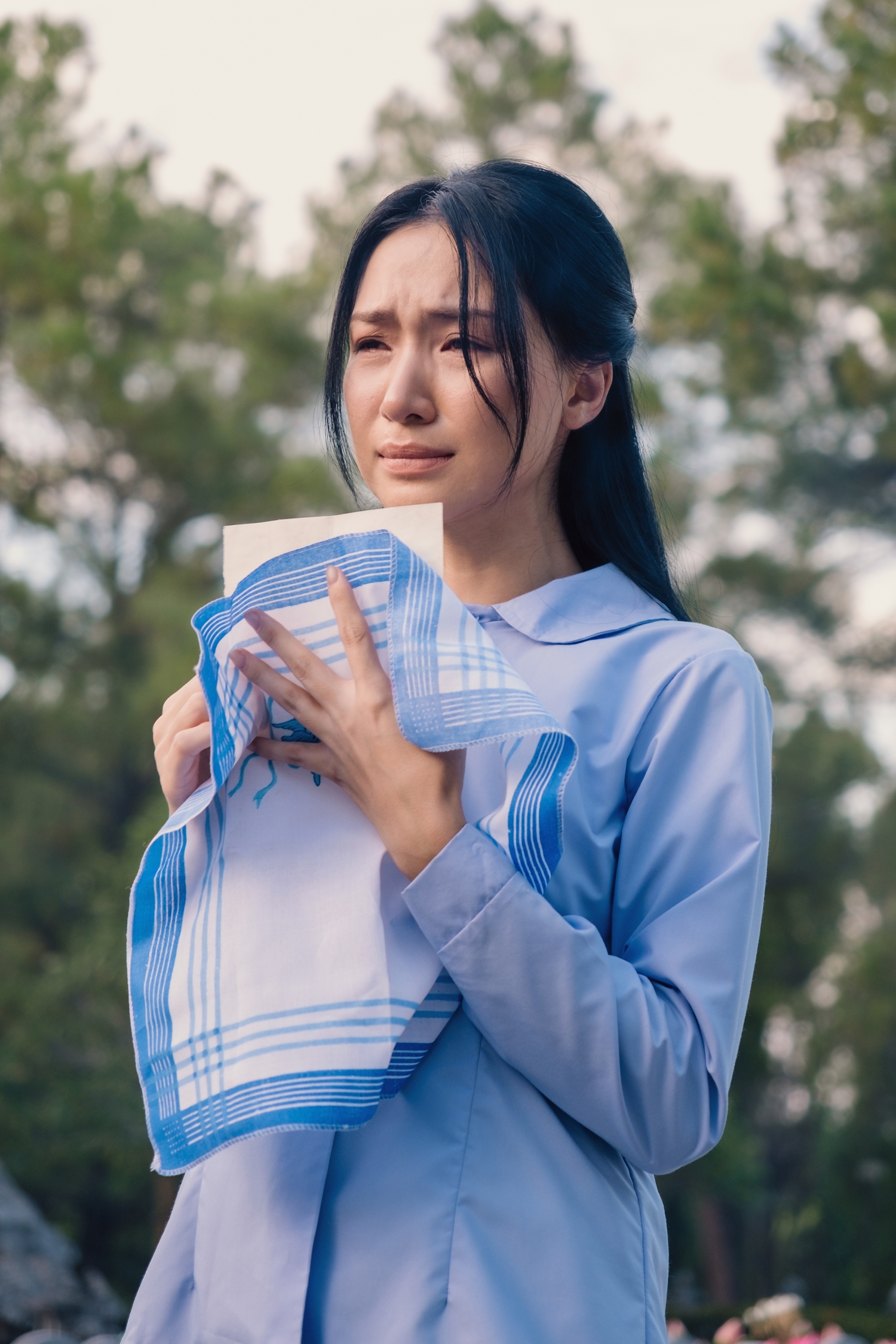 |
The peace blue tunic and handkerchief embroidered with two birds were familiar symbols associated with Vietnamese women during the resistance war and subsidy period. Photo: Provided by the interviewee |
The choice of material also demanded careful consideration. After much deliberation, the team selected linen and voile, a lightweight cotton fabric with moderate structure, commonly used back then.
To make the new clothes look aged, the designer steeped them in tea or coffee to give the fabric a faded appearance. Some white tunics had to soak overnight to achieve the right level of dullness. "Sometimes, clothes had to be sewn right on set, then steeped in tea and dried quickly to keep up with the filming schedule," Quan said.
Accessories, including three-leaf hair clips, were also meticulously chosen. The stylist bought new conical hats and exchanged them for old ones from locals. Handkerchiefs, commonly used to wipe sweat or tied under the hat's strap, were prepared in various colors. Some were embroidered with a pair of peace doves, conveying the message of longing for freedom. At least two or three of each accessory were prepared in case of loss or damage during filming.
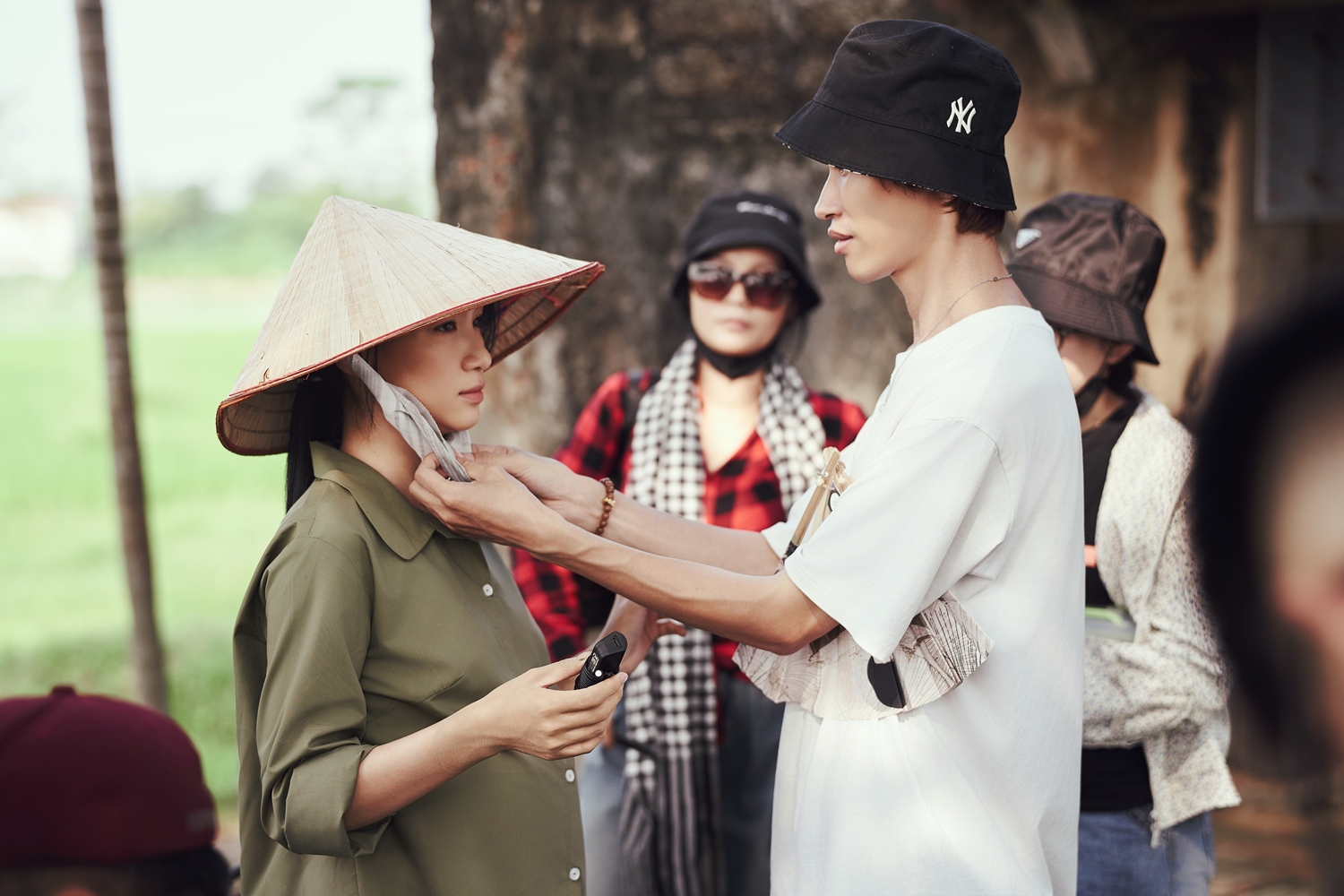 |
Stylist Khuc Manh Quan prepares Hoa Minzy's costumes on set. Photo: Provided by the interviewee |
According to Quan, the biggest challenge during costume preparation was time. For the first scenes filmed in Quang Tri, his team had only one night to prepare blue tunics, black trousers, scarves, and shoes for Hoa Minzy's early morning flight. Over the next four days, the costumes were gradually completed and new ones were continually added.
Khuc Manh Quan, 33, worked in marketing before becoming a stylist. He has styled numerous actors like Hong Diem, Huyen Lizzie, Kieu Anh, and Quynh Kool. Before the "Noi dau giua hoa binh" music video, he collaborated with Hoa Minzy on the "Thi Mau" and "Bac Bling" music videos, which became popular in March, and Duc Phuc's "Em dong y (I do)" music video.
Designer Quyen Nguyen has over 10 years of experience. She graduated from the University of Industrial Fine Arts and the Open University (Industrial Design Department, majoring in fashion design). In addition to Ao Dai, she also designs wedding dresses. Quyen Nguyen has provided fashion consulting and support to many artists such as Miss Duong Thuy Linh, runner-up Nguyen Thi Loan, and singer Ngoc Anh.
Y Ly




